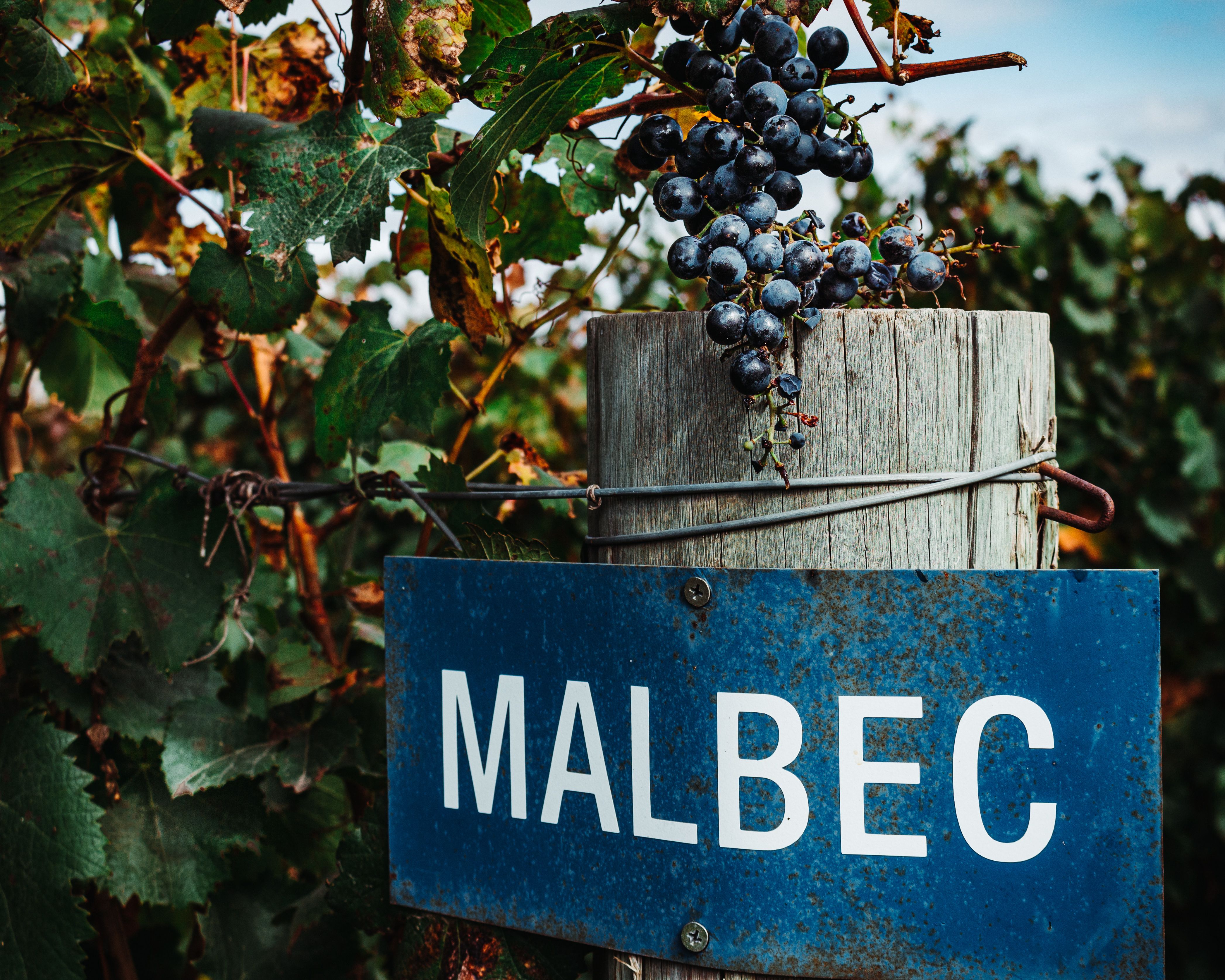LC×LC Using HILIC and RPLC Determines Anthocyanin Content During Malbec Winemaking Process
Increases and decreases in anthocyanin concentration, which relates to the level of sugars found in red wine, were observed at specific weekly intervals of the grape ripening process.
A collaboration between chemists and food scientists in Brazil, Poland, and Spain has resulted in a new study, published in the Journal of Chromatography A, of the anthocyanin levels found in Brazilian-grown Malbec grapes during their ripening period, in an effort to identify the optimal time for those grapes to be harvested for winemaking (1). The research team selected a comprehensive two-dimensional liquid chromatography process (LC×LC), with hydrophilic interaction chromatography (HILIC) in the first dimension (1D) and reversed-phase liquid chromatography (RPLC) in the second (2D), coupled to a diode-array detection (DAD) and tandem mass spectrometry (MS/MS) for analysis.
Malbec grape | Image Credit: © Daniel - stock.adobe.com

Anthocyanins are described by Food & Nutrition Research as water-soluble phenolic compound pigments that account for the colors red, purple, and blue in fruits and vegetables (2). Other kinds of polyphenols may affect flavor, astringency, or bitterness, have cardioprotective, anti-hypertensive, anti-inflammatory, or antioxidant properties, and vary by varietal and maturity as well as changes that occur during the maceration and fermentation processes (1). The Journal of Chromatography A study focuses on the Malbec grape, which is French in origin but is now commonly associated with South America and is the cultivar in its namesake red wine.
What these researchers found is that the occurrences of highest anthocyanin concentration were during the fifth and sixth weeks of a 10-week ripening period of the Malbec grape, then decreasing through week nine, matching the time of the highest concentration of sugars measured in the grape (1). The method used in this discovery was a comprehensive two-dimensional liquid chromatography (LC×LC) approach, which builds on one-dimensional liquid chromatography (1D-LC) by providing meaningful increases to both peak capacity and power of resolution.
Hydrophilic interaction chromatography (HILIC) and reversed-phase liquid chromatography (RPLC) have “excellent potential for polyphenols analysis,” according to the study, with their separations based on non-correlated mechanisms (1). But the researchers conceded that some incompatibility arises with these two methods regarding mobile phase solvents in 1D versus 2D. In this experiment, two alternative workarounds were proposed: either focusing modulation or adding a step of dilution of the 1D effluent before injection in the 2D.
The researchers reported that anthocyanins as well as flavan-3-ols, another known component of red wine or grape phenols, were tentatively identified (1). Most of the anthocyanins were derivatives of malvidin, which was to be expected as that is the main anthocyanin found in grapes. But what these discoveries proved to the researchers, on a larger scale, was that a multidimensional HILIC×RPLC analysis might prove useful in other food applications—anywhere, they said, where complex food samples require more than just one dimension of chromatographic separation.
References
(1) Lago, L.O.; Swit, P.; da Silva, M.M.; et al. Evolution of anthocyanin content during grape ripening and characterization of the phenolic profile of the resulting wine by comprehensive two-dimensional liquid chromatography. J. Chromatogr. A 2023, 1704, 464131. DOI: 10.1016/j.chroma.2023.464131
(2) Khoo, H.E.; Azlan, A.; Tang, S.T.; Lim, S.M. Anthocyanidins and anthocyanins: colored pigments as food, pharmaceutical ingredients, and the potential health benefits. Food Nutr. Res. 2017, 61 (1), 1361779. DOI: 10.1080/16546628.2017.1361779
Advances in Non-Targeted Analysis for PFAS in Environmental Matrices
March 27th 2025David Megson from Manchester Metropolitan University in Manchester, UK, spoke to LCGC International about the latest developments in non-targeted analysis (NTA) of per- and polyfluoroalkyl substances (PFAS) in environmental matrices based on a recent systematic review paper he has collaboratively published (1).
Study Explores Thin-Film Extraction of Biogenic Amines via HPLC-MS/MS
March 27th 2025Scientists from Tabriz University and the University of Tabriz explored cellulose acetate-UiO-66-COOH as an affordable coating sorbent for thin film extraction of biogenic amines from cheese and alcohol-free beverages using HPLC-MS/MS.
Quantifying Microplastics in Meconium Samples Using Pyrolysis–GC-MS
March 26th 2025Using pyrolysis-gas chromatography and mass spectrometry, scientists from Fudan University and the Putuo District Center for Disease Control and Prevention detected and quantified microplastics in newborn stool samples.







